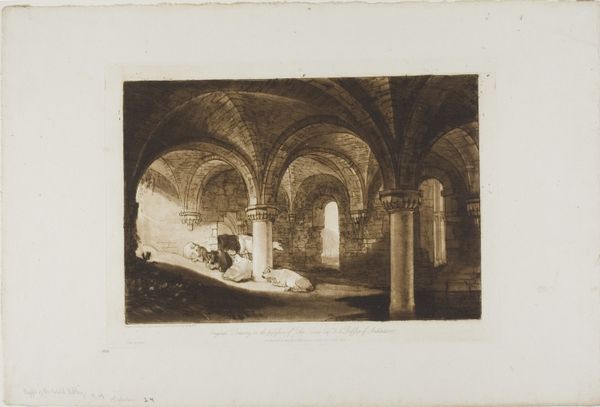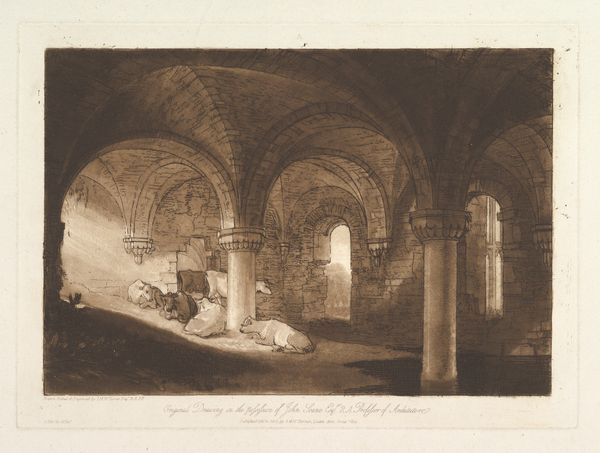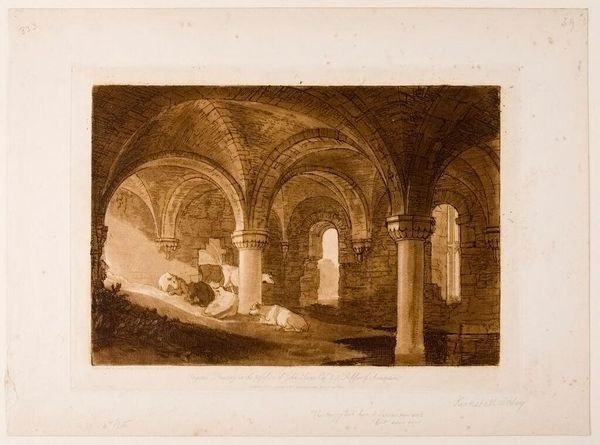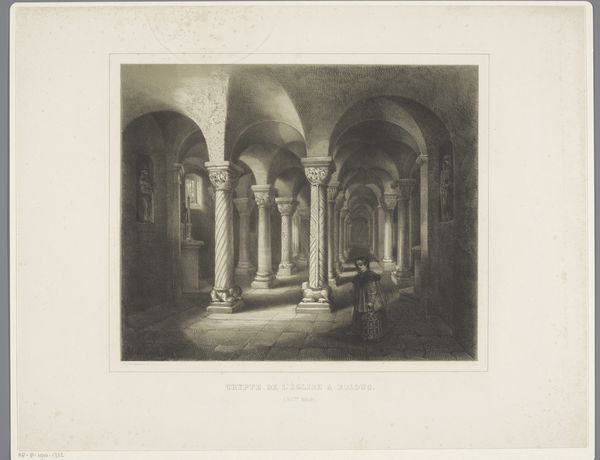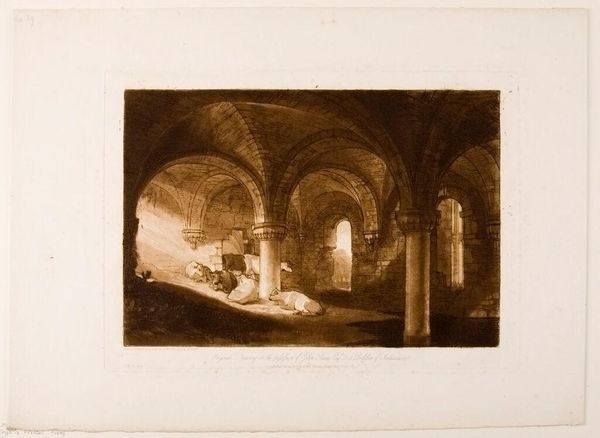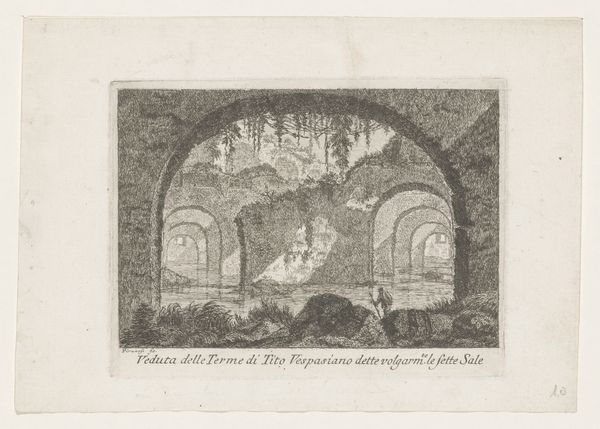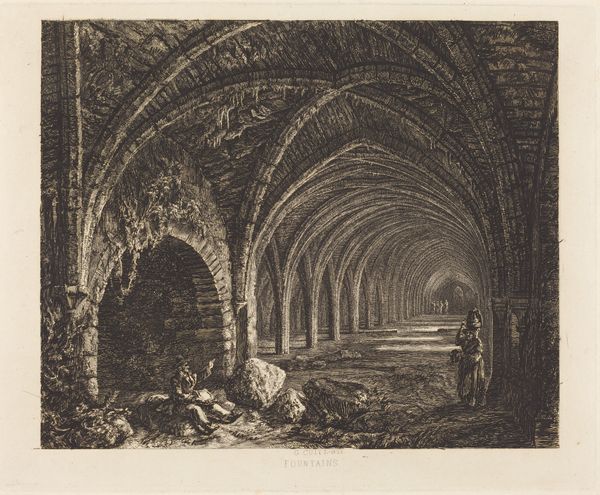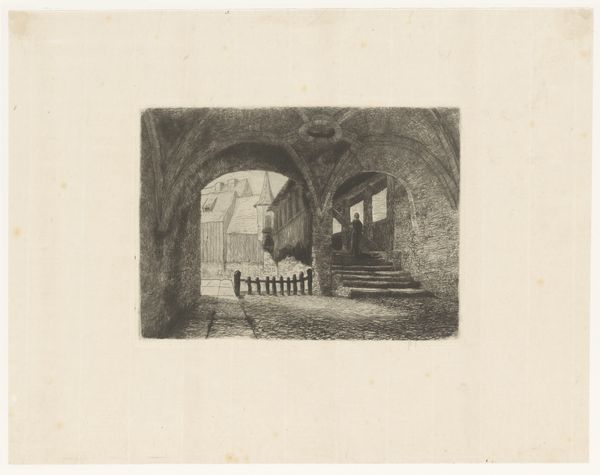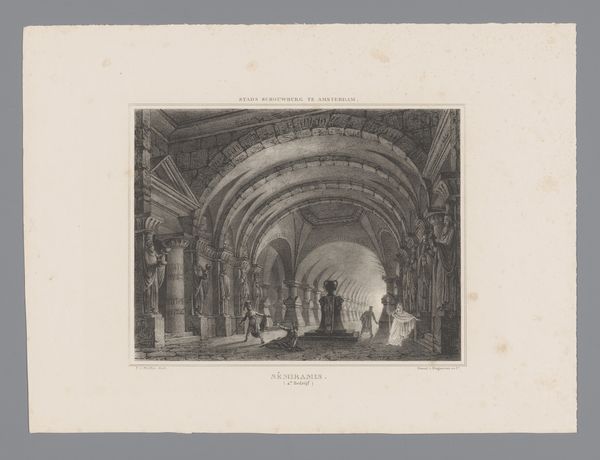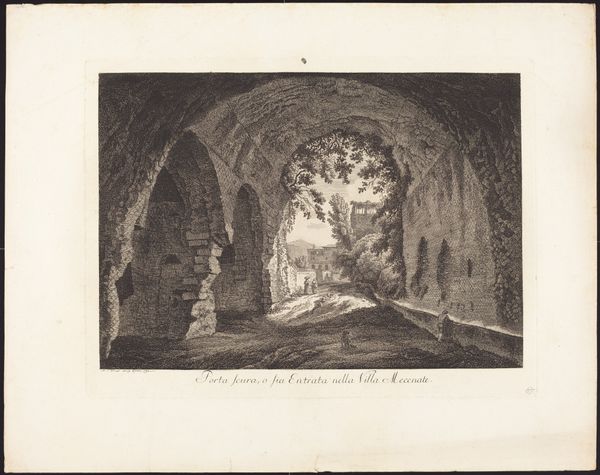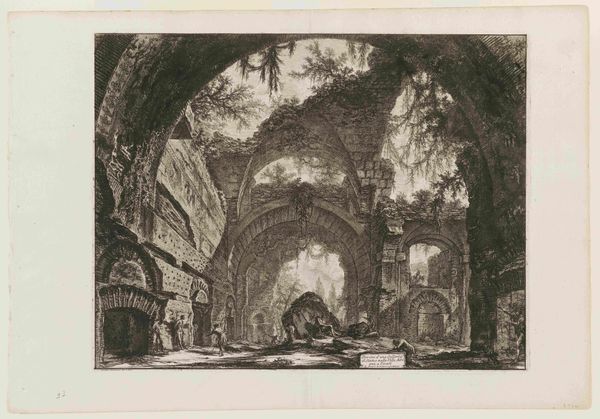
Crypt of Kirkstall Abbey, plate 39 from Liber Studiorum Possibly 1812
0:00
0:00
drawing, print, etching, architecture
#
drawing
#
medieval
# print
#
etching
#
landscape
#
charcoal drawing
#
history-painting
#
architecture
Dimensions: 181 × 264 mm (image); 210 × 291 mm (plate); 267 × 381 mm (sheet)
Copyright: Public Domain
This print of Kirkstall Abbey's crypt was created by J.M.W. Turner, using etching and mezzotint. Etching is the use of acid to cut into the metal, and mezzotint involves roughening the surface for tonal effects. These processes are less immediate than painting or drawing, but are extremely well-suited to capturing light and atmosphere. Here, the light seeps into the ruined abbey in an almost palpable way, illuminating the rough stonework and the livestock seeking shelter within. Turner made his own paper, mixed his own inks, and burnished the plates himself, giving him complete control over the final image. These hand processes stand in contrast to the industrialization happening at this time in England, with machines and factories transforming the landscape. By returning to the hand and depicting a scene of pre-industrial life, Turner offers a subtle commentary on the changing world, reminding us of the value of traditional craft and rural existence.
Comments
No comments
Be the first to comment and join the conversation on the ultimate creative platform.
